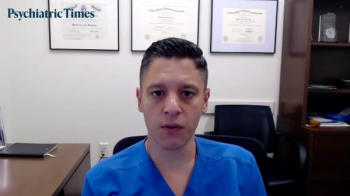
Telehealth’s Calming Effect on Autism
Here’s how online appointments are lowering anxiety among patients and families.
COMMENTARY
Getting to a doctor’s appointment can be a sensory obstacle course for individuals living with
Assessing and treating patients with ASD holds numerous challenges for patients, parents, caregivers, and mental health clinicians. Appointment logistics aside, the biggest barrier has been gaining access to care. But since the COVID-19 pandemic,
Prior to the pandemic, 64% of providers in an American Psychiatric Association survey said they did not use telehealth to treat patients. In January 2021, a whopping 81% of respondents said telehealth was now how they saw 75% to 100% of their patients.1 Today, it is a highly regarded tool that allows clinicians to observe patients in more relaxed settings, offers convenience for families, and, ultimately, provides better care for patients.
Autism’s Treatment Obstacles
ASD is a lifelong neurodevelopmental disorder that has been diagnosed in about 1 in 44 children.2 It is characterized by varying degrees of impairment in social communication skills and language, restricted interests, and repetitive behavior.3 ASD can be detected as early as age 2, but the median age of diagnosis is 4.4 Diagnosing autism generally involves interviews with parents and caregivers, direct observation of the patient, and reports from other doctors, teachers, and daycares. Thorough and early diagnosis can introduce valuable interventions to help patients improve function. Yet, access to clinicians, treatments, and services is not equally provided across the country. Economic challenges, geographic distance, a lack of specialized clinicians, and a lack of cultural understanding are just some of the barriers.
Children who live in rural or remote areas are more likely to receive a diagnosis for autism 6 months later than children who live in urban areas. Children who live at or below the poverty line are more likely to be diagnosed a full year later than those in more affluent families.4
The growing popularity of telehealth is helping to cross these barriers and reach more patients. It also provides access to highly specialized clinicians who bring diverse training backgrounds. Today, 38% of Americans use telehealth to meet with a medical or mental health clinicians, up from 31% in 2020.5
Benefits for Patients and Families
Ensuring a trip to a doctor’s office goes smoothly takes a lot of planning, and it is not uncommon for appointments to be rescheduled at the last minute. Being in new or uncomfortable surroundings can heighten any patient’s anxiety level. Busy waiting rooms or memories of previous appointments can overstimulate sensitive patients. Parents and
One of telehealth’s biggest benefits is its ability to give patients more control over their treatment environment. Patients can avoid jarring transitions into medical settings and remain in spaces that are more natural to them, such as their homes. Many also appreciate having the freedom to switch off the video if face-to-face interactions become too intense. Providing these options can go a long way in establishing trust and connection between patients and clinicians.
Telehealth is also beginning to replace at-home behavioral analysis therapy sessions. Held up to 5 times a week, these sessions bring clinicians into a patient’s home and can be invasive and disruptive in their own way. Telehealth can be a subtle way for clinicians to observe their patients in a relaxed setting. This in turn encourages patients to schedule more therapy sessions, leading to improved treatment oversight and, theoretically, better outcomes.
Benefits for Clinicians
A 2013 study observed that there was no significant difference in using telehealth as a reliable diagnostic tool. Parents also reported satisfaction with their experience using the platform.4 Telehealth is a boon for clinicians because it makes it easier to collect consistent and naturalistic observations of patients.6 This is supported by previous research indicating that clinicians who watched home videos of infants and toddlers had greater success analyzing symptoms of ASD.4 Clinicians also note the value of involvement of parents in telehealth assessments because it gives them an opportunity to consider their child’s behavior from another perspective.6
Telehealth can go even further by allowing clinicians to contribute, share, and collaborate on information over online platforms. Advancements in web-based cameras allow clinicians to observe and measure a patient’s behavior remotely and even take note of subtleties. But while telehealth holds much potential in the treatment of
Drawbacks
Using telehealth to complete a diagnostic assessment may not work for every patient. A lot depends on symptom severity, age, and developmental impairment. One of the biggest concerns is that relying on telehealth to treat autism will cause clinicians to overlook important subtleties more easily observed in person. It can also make it difficult to notice
Telehealth may also cause patients to behave differently. They may flat-out refuse to interact over video or hover just off-screen. Interactions between the parent and child can cause additional distractions. In these situations, in-person appointments may need to be mixed into treatment settings.
Technological side effects such as bad lighting and poor internet connections may also stymie telehealth’s progress. For families experiencing economic hardships, access to the hardware and software needed to participate in telehealth is still a challenge.
Clinicians have little control over a patient’s home environment, which can impact the success of telehealth. Ultimately, its success relies on a clinician’s confidence in using the tool, along with the willingness of patients and families to participate. In some cases, nothing can replace the benefit of in-person appointments.
Concluding Thoughts
Telehealth shows tremendous potential in bridge gaps in access to care. More clinicians are gaining confidence using it to assess and diagnose patients with ASD. Of course, there will be situations when telehealth cannot capture the complete picture of a patient's needs. In these situations, clinicians may find greater success creating a mix of in-person and online appointments.
Telehealth’s biggest benefit lies in its ability to treat patients with ASD in an environment that is comfortable and convenient for them. By reducing the stress associated with these appointments, telehealth is proving to be a powerful tool in leading patients toward well-being.
Dr Ramirez-Moya is a child and adolescent psychiatrist with
References
1. APA member survey highlights benefits of telehealth use during pandemic. June 30, 2020. Accessed June 23, 2022.
2. Data & statistics on autism spectrum disorder. Centers for Disease Control and Prevention. Accessed June 23, 2022.
3. What is autism spectrum disorder? American Psychiatric Association. Accessed June 23, 2022.
4. Dahiya AV, McDonnell C, DeLucia E, Scarpa A.
5. New nationwide poll shows an increased popularity for telehealth services. American Psychiatric Association. May 27, 2021. Accessed June 23, 2022.
6. Kryszak EM, Albright CM, Fell LA, et al.
Newsletter
Receive trusted psychiatric news, expert analysis, and clinical insights — subscribe today to support your practice and your patients.















